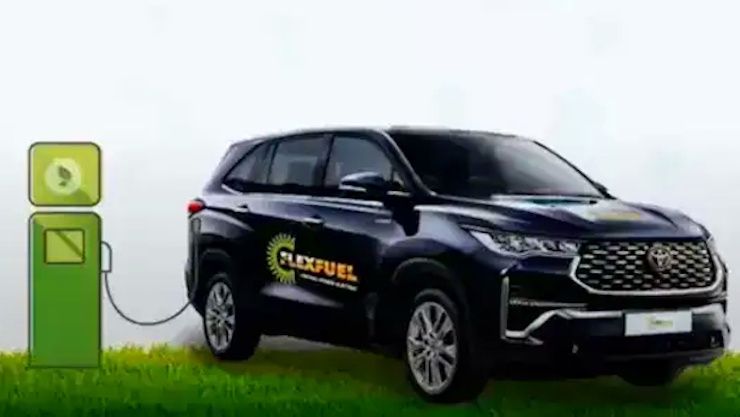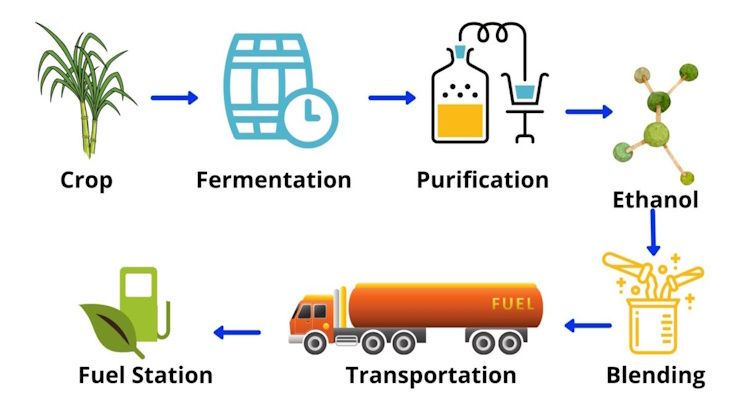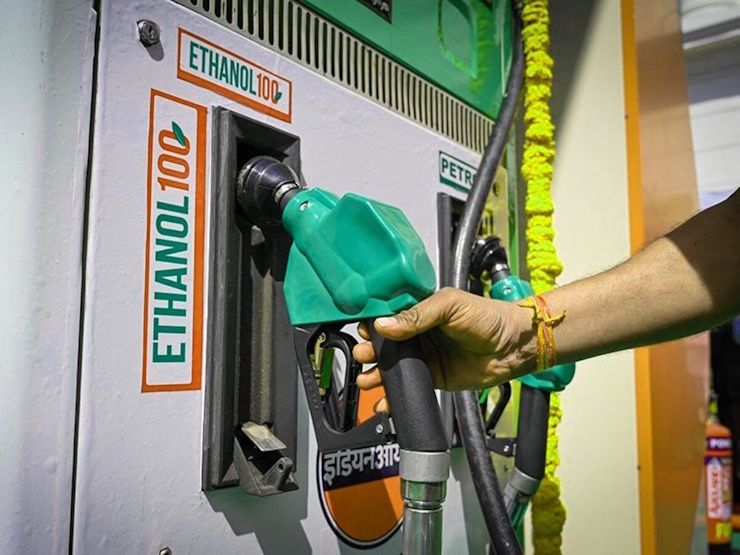Indian Govt To Increase Ethanol Blending In Petrol To 27 %? Clarification Issued On E27 Petrol


India’s petrol pumps are set to go through another transformation. After racing ahead with E20 petrol, a mix of 20% ethanol and 80% petrol, reports suggest that the Indian government now wants to push the blend to E27. That means 27% ethanol and 73% petrol, and officials hope it will roll out before 2030.

For now though, the Indian government has debunked these reports, calling reportage about E27 petrol (27 % ethanol, 73 % petrol) speculating, misleading and mischievous. Here's the government's official tweet,
When the government first introduced its ethanol plan, it aimed for 20% blending by 2030. That goal was pulled forward to 2025–26, and India has nearly reached it already. In June this year, the average blend stood at 19.9%.
With that success in hand, a top-level panel has now asked for standards to be framed for E27 fuel, and India’s top auto testing agency, ARAI, is checking what changes vehicles may need to handle the new mix. However, a final decision to increase ethanol blending in petrol is yet to be taken.

Brazil has already shown that E27 can work smoothly. Since 2015, every petrol car there has run on 27% ethanol. Their cars use smart fuel systems that adjust engine timing and settings to suit the blend, making up for ethanol’s lower energy content. India is planning something similar, using sugarcane, maize, and crop waste to make ethanol at home and reduce reliance on imported oil.
Ethanol contains about one-third less energy than pure petrol. When tested, cars running on E20 showed a 7–8% drop in mileage. If things scale the same way, E27 could reduce fuel efficiency by around 10%.
However, modern engine computers can adjust spark timing and other settings to reduce this drop, thanks to ethanol’s higher octane rating. It burns cleaner and cooler, which could actually improve engine performance in some conditions.
There’s also the matter of materials. Ethanol can absorb water and cause rust or wear on fuel lines, gaskets, and tank coatings that aren’t treated properly. Since April 2023, cars sold in India are required to handle E20 without issues.
Moving to E27 will mean slightly tougher parts, but most new cars and bikes sold from 2025 onwards will be ready for the switch. Older vehicles might need more frequent checks, especially on hoses and filters.

On cold mornings, you might find your engine takes a second longer to start. That’s because ethanol doesn’t vaporise as quickly as petrol. But software in modern vehicles already compensates for this, so you may not even feel the change.
Performance-wise, things could improve slightly. Ethanol allows the engine to run at settings that produce more power without knocking, especially when the throttle is pushed wide open.
However, fuel economy will likely dip a bit. If you’re used to 15 km per litre on E20, expect closer to 14 on E27. Over a year, this could mean using 50 to 60 more litres of petrol, which adds up to around ₹5,000 at current prices.
Servicing your car or bike will become more important. Ethanol can clean out deposits, which sounds good but also means your fuel filter and oil might need replacing more often. Stick to the manufacturer’s service schedule, especially for vehicles made before 2015.

Ethanol is cheaper to produce than imported crude oil. In fact, oil companies saved ₹4–₹6 per blended litre last year, which helped keep pump prices ₹1–₹2 lower than they would have been. So even with a slight mileage drop, you might not feel the pinch at the pump. The key will be how the final pricing of E27 works out once it becomes common.
Maintenance costs might rise slightly if your vehicle is older or not updated to handle E27. Rubber parts, especially in older scooters and bikes, can harden and crack faster. A fuel system check once a year will help avoid any surprises.
Ethanol is considered a green fuel because the carbon dioxide it releases while burning is mostly balanced by the amount the crops absorb while growing. Since India started blending ethanol, officials say it has helped cut over 570 lakh tonnes of CO₂.
Moving from E20 to E27 will add to that savings. But experts warn that growing more crops for ethanol should not hurt food supply, increase water use, or cause damage to the soil. So careful planning will be needed to make sure this green fuel remains truly green.
Brazil moved to E27 a decade ago and has since built over 350 ethanol plants and a wide network of flex-fuel pumps. Their cars can use anything from E27 to pure ethanol, giving drivers more choice based on market prices. India may need similar flexibility, especially during years when sugarcane output is low.
Also important is vehicle design. While most cars in Brazil are now flex-fuel, even older ones manage just fine on E27. Indian cars will need to meet similar standards. For drivers, the key will be transparency in pricing and clear benefits in performance or cost.
Drivers in India are hopeful about the environmental and price benefits, but they worry about how older parts will hold up. Experts point out that fuel economy may drop unless carmakers tune gear ratios and compression for the new blend. Two-wheeler companies like Hero and TVS are already testing how E27 behaves in popular models like 125cc and 200cc bikes.
It’s best to not store blended fuel for too long, as ethanol attracts moisture. Check your vehicle from April 2025. New models will carry a sticker showing E20 compatibility. Use the oil grade recommended by your manufacturer, as ethanol can affect lubrication slightly. And during each service, ask your mechanic to check for cracks in rubber hoses.

After E27, the road opens up to higher blends like E30 or even E100. With better engine tech and more biofuel production, India may even see hybrid vehicles running on near-pure ethanol. These can cut carbon emissions drastically, acting as a bridge until electric vehicles become common.
For now, E27 (as and when it happens) marks the next big step in India’s fuel journey. It might mean a few changes in your driving habits and a little extra care for your engine. But it also brings the promise of cleaner air, more savings on oil imports, and a new income stream for Indian farmers. With a little help from drivers, mechanics, and fuel companies, this blend could become the new normal.